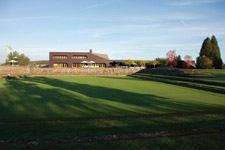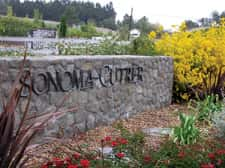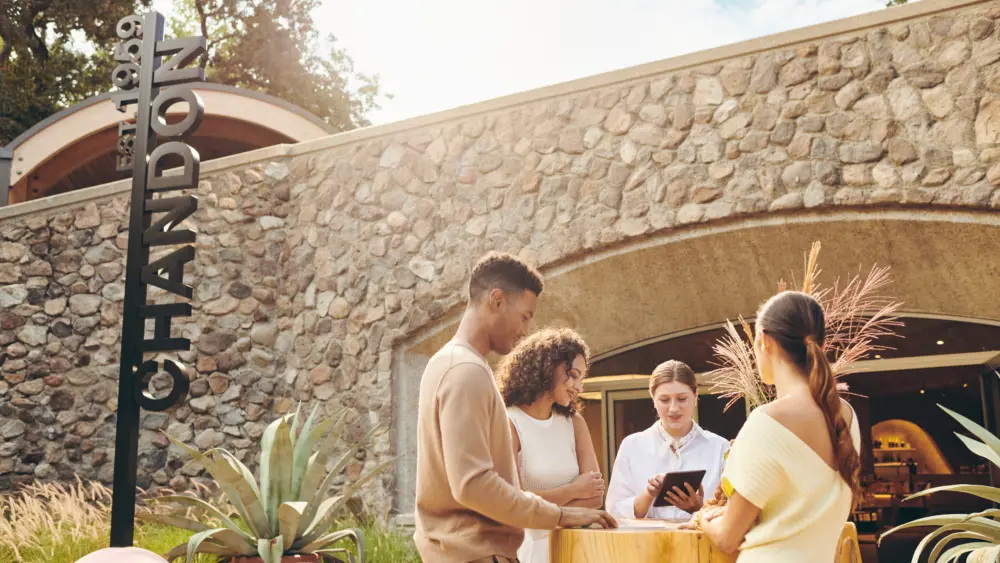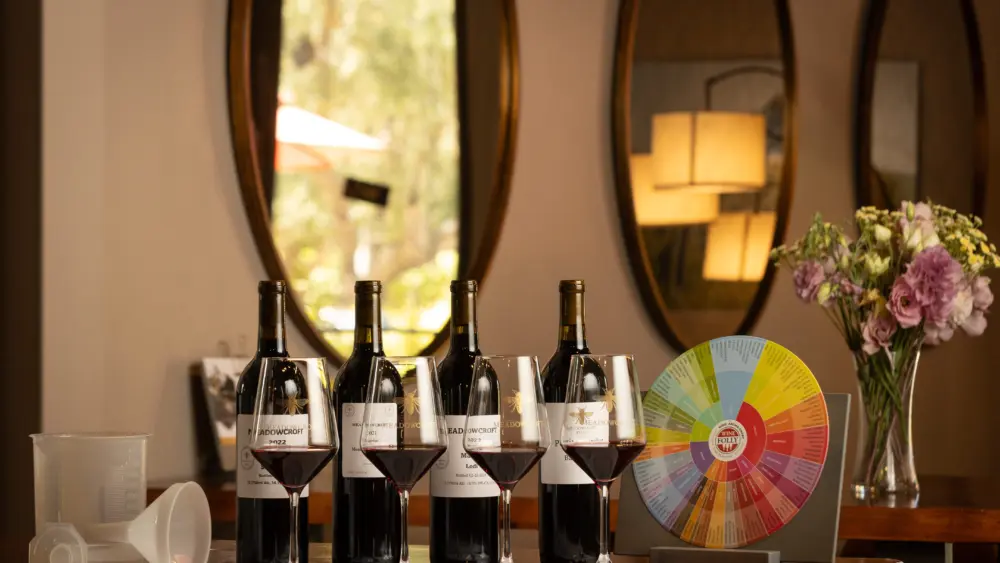Sonoma-Cutrer Vineyards
4401 Slusser Rd.
Windsor, CA 95491
www.sonomacutrer.com
Hours: Thursday through Monday by appointment
Tasting Fees: $10 for a basic tasting; $25 for tasting and tour
Wines currently offered: Chardonnay, Pinot Noir
Appointment necessary: Yes
Picnics: Yes
Did You Know?
In 1992, winemaker Terry Adams surreptitiously planted Sonoma-Cutrer’s first Pinot Noir vines, near the estate’s compost area, with help from an associate, a dog named Blanco and a bottle of tequila.

Sonoma-Cutrer was founded, as a vineyard company, in 1973 by Brice Cutrer Jones, who’d become enamored with European wines while stationed internationally with the Air Force in the 1960s. To start, Jones planted numerous French varietals on his property west of Highway 101 (between Santa Rosa and Windsor), but soon discovered the climate was best suited to Chardonnay. By the late 1970s, he’d replanted to focus solely on that varietal.
Jones’ fruit was in high demand by premium local wineries and talk turned to the possibility of producing wine. Sonoma-Cutrer produced its first wines with the 1981 vintage, using an old hop barn on the property to house operations. Two years later, a large, modern facility was built and the Sonoma-Cutrer wine brand was officially released to critical praise.
The years that followed saw expansion of estate-owned vineyards throughout the Russian River Valley appellation (and one in Sonoma Valley) with the focus remaining primarily on top-notch Chardonnay fruit, although today, Sonoma-Cutrer also produces a limited amount of Pinot Noir.
Take the tour
Now owned by Brown-Forman, the winery only opened to the public in July 2010. But even with that short tenure, it’s already been voted a gold medal winner for Best Wine Tasting Room in the 2011 NorthBay biz Best Of the North Bay Readers Poll. I guess North Bay wine lovers had been waiting for the chance to visit.
Just 10 minutes from downtown Santa Rosa, it feels worlds away—serene and peaceful. The grounds are lovely: A tree-lined parking lot sits aside the crushpad and a pond that, on the day we visited, played host to a few herons. Traditional wooden picnic tables are available here, or opt for an umbrella-shaded one on the large terrace outside the tasting room.
Vast, well-manicured lawns surround the winery building, including two full-size croquet courts that sit below the terrace and are available for rental (or you can stop by on the weekends and play a round). Sonoma-Cutrer annually hosts the North American Championships of that sport as well as a major fund-raiser for the Greater Bay Area Make-A-Wish Foundation each May (last year it raised $820,000).
Take the tour, and you’ll learn about the winery’s history, but more important, you’ll learn about the vines. Standing beside the Cutrer Vineyard, our host described soil composition, clonal choices, planting and spacing techniques, maintenance methodologies and harvest procedures. He answered questions and even encouraged us to taste the growing fruit.
Next stop was the crushpad (next to the parking lot and storage pond) and winery facility, where we were shown the cooling tunnel. Most wineries try to reduce harvested grape temperature before crushing them, but Sonoma Cutrer takes it one step further. The winery has constructed a temperature-controlled cooling tunnel.
Every bin of grapes travels the length of the tunnel with 20-degree air blowing down on it. The goal is to bring fruit to 40- to 45-degrees, because at that temperature, green tannins (which can make the wine bitter) are suppressed so less manipulation is needed once the wines are in barrel. It’s this kind of attention to detail that’s earned Sonoma-Cutrer its stellar reputation.
Taste the wine
Sonoma-Cutrer winemaking combines “old world technique and new world technology.” The resulting wines display both expected varietal characteristics and surprising traits that reflect the terroir of Sonoma-Cutrer’s vineyards.
The differences are most apparent when tasting the 2007 Cutrer Chardonnay (a round, creamy, California-style Chardonnay from the estate vineyard) next to the 2007 Les Pierres (translated as “the stones,” this rocky vineyard at the southern end of the Sonoma Valley AVA imparts a crisp minerality to the wine). A third Chardonnay, a blend of all five SC vineyards called Russian River Ranches (2009; tropical nose, smooth palate with a long, lemony finish), is the one most commonly found on restaurant wine lists.
The 2007 Russian River Valley Pinot Noir is sourced from a variety of SC’s own Sonoma Coast vineyards and has an earthy nose, silky palate and jammy, spicy flavors. We also sampled both the 2007 Founders Reserve Chardonnay and Pinot Noir, which are culled from the top blocks of fruit and left to age in-barrel nearly one year longer before bottling.
Speaking of barrels, Sonoma-Cutrer has an extensive (and exclusive) barrel program. It works directly with a handful of French tonnelleries (cooperages) to secure wood from specific trees within specific forests. Hand-split staves are aged outdoors for three years (to naturally leach out saps, tars and resins) before being shaped into barrels and shipped to the winery for use. It’s just another part of the attention to detail that makes Sonoma-Cutrer a standout in Sonoma County wine.




